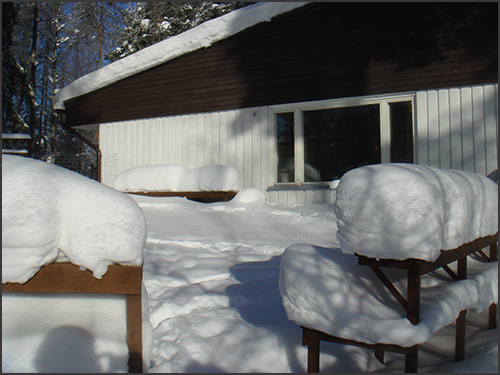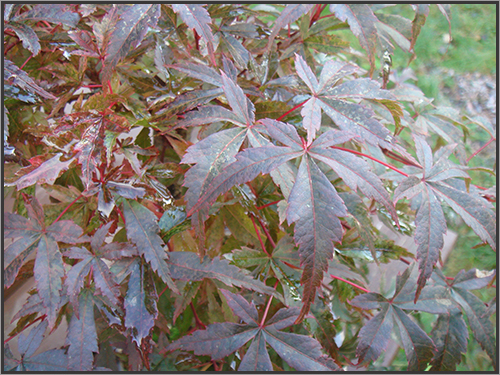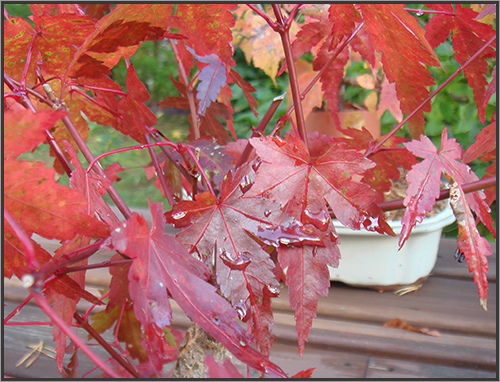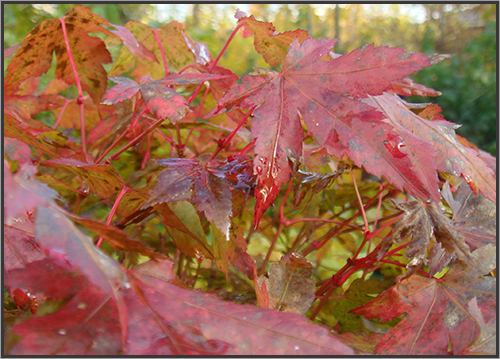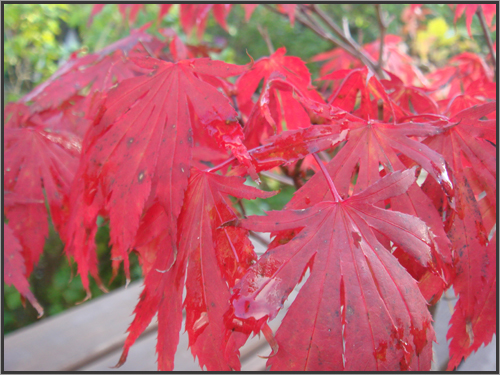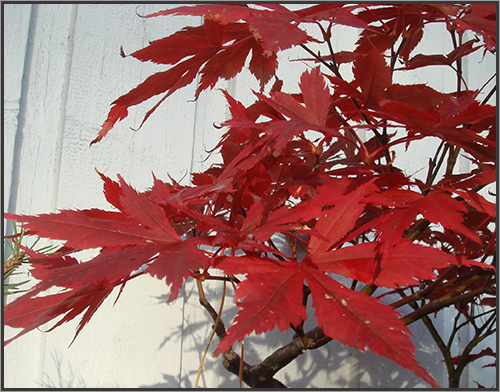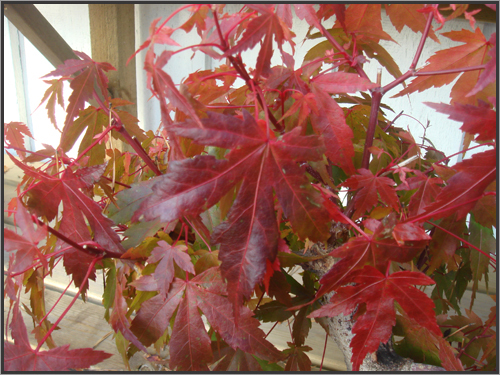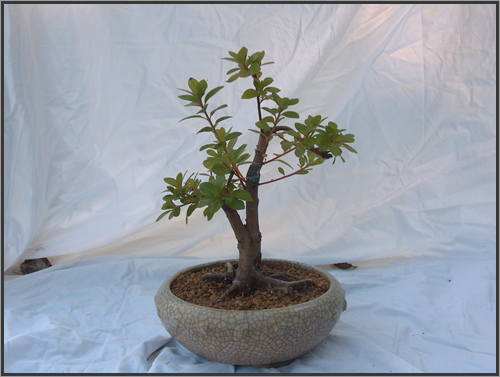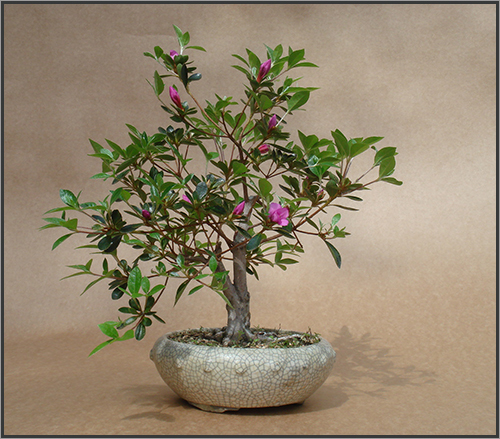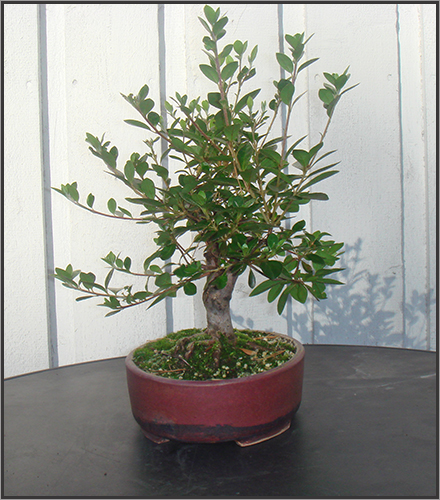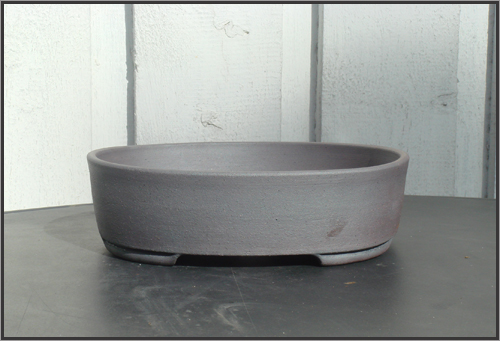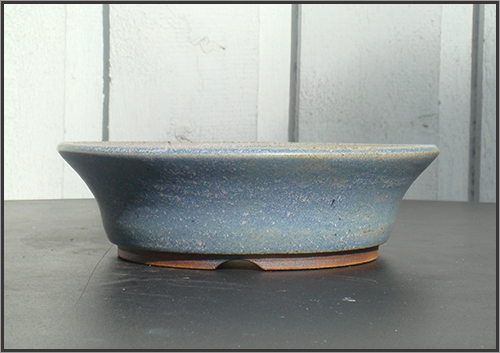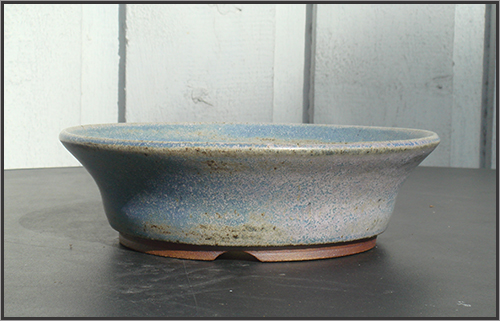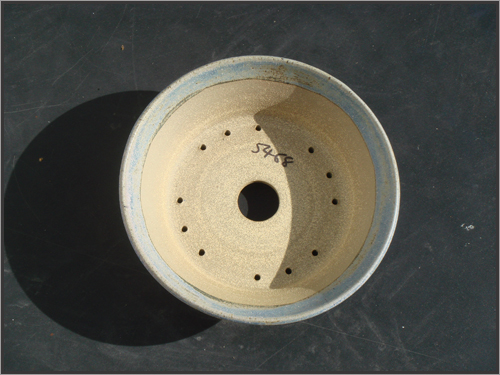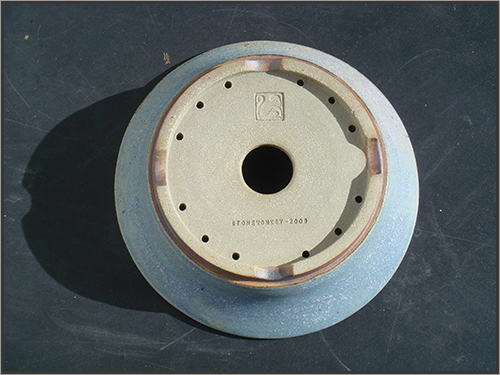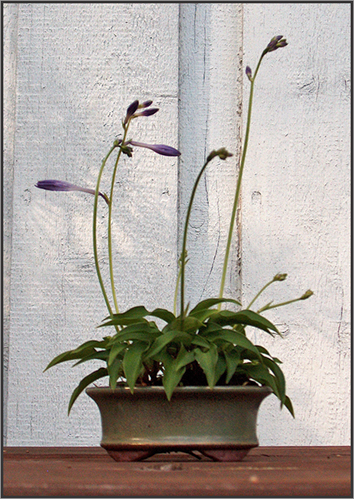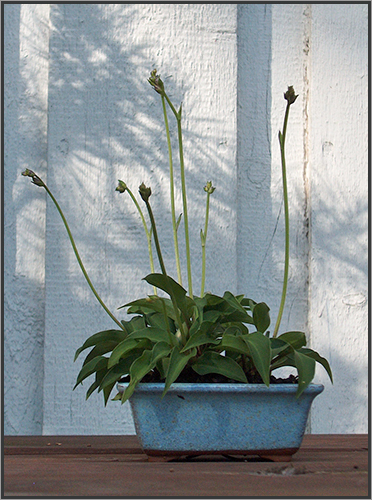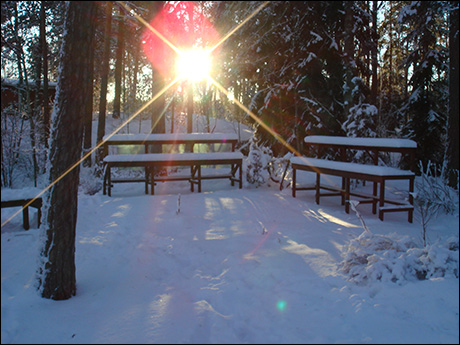Last week was quite a busy one, I made a short trip to Stockholm and on Saturday we held the first Kitabi meeting for the autumn. Stockholm is a nice city to visit, and even if there is nothing in bonsai way to watch in the city itself, there is a lot of things for the one interested in Japan to do. I had a quite busy scedule, but I managed to have lunch at two nice Japanese restaurants, one in Gamla Stan/Old Town, Restaurang Shogun (Tyska brinken 36, 111 27 Stockholm ), and the other at Restaurang Samuraj in Östermalm (Kommendörsgatan 40, 114 58 Stockholm). I also visited the food shop Japanska Torget (Tegnérsgatan 6, Stockholm), where I found some food stuff not available in Helsinki. I wanted to buy chawan mushi cups, but they were unfortunately out of stock, but a beautiful set of small plates found their way home to Finland. Östasiatiska museet had an exhibition with old kimonos (and also ghastly "modern" kimonos), which was very interesting.
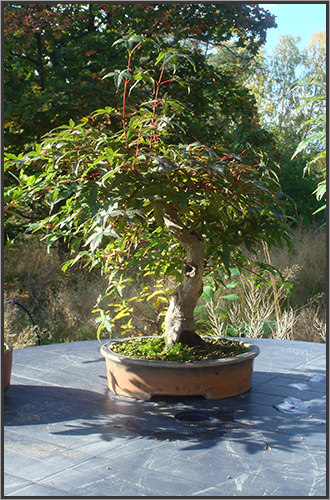
Japanese maple 'Seigen' (growing new branches, and thus looking a bit undone) at Kitabis meeting
On Saturday held the Finnish bonsai association Kitabi the first meeting for this autumn. Unfortunately Teemu Oja, who had planed the program for the meeting, got a cold, and we had at Friday to come up with something new. The sunny afternoon was spend going through some members' trees. Warming coffee and superb apple pie was enjoyed before we parted for home. Thank you Asta for your hospitality!
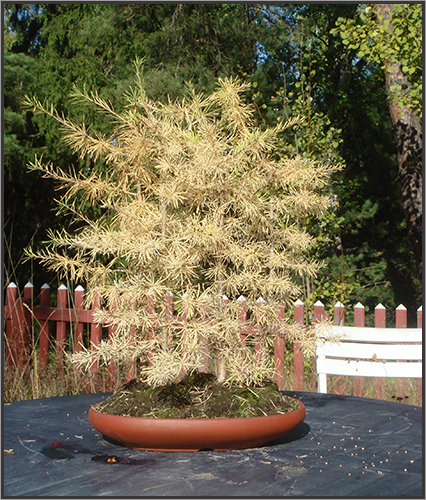
Larch forest in autumn colours at Kitabi's meeting
And to the theme for this posting. Needle plucking season is here. Or so I think, but I have ponded a bit over when it actually should be done, and perhaps it's something that could be started even earlier, in late August - beginning of September? That way would the dormant buds benefit more from the plucking, perhaps. The main idea behind needle plucking is to balance the energy in the tree, by allowing more needles to be left on the weaker branches, and removing more needles on the stronger branches. But needle plucking should also strengthen buds that start to swell in the autumn. It's a time consuming task, since you have to be careful not to rip away both needles in the pair (I have only Scots pines and one mugo, with five needle pines you have to cut), which could damage the potential bud beginning to grow between the needles.
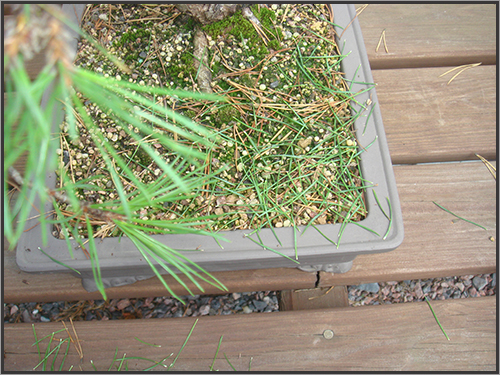
I have nine Scots pines and one mugo. I started needle plucking last week, and I have three trees finished. My goal is to be finished this week. The mugo is pretty strong, with only one branch slightly weaker than the rest, and one slightly stronger than the rest. I left 3 needle bundles on the strong, four on most and five on the weakest. On the Scots I have left four bundles on the strongest branches, and the weakest branches have been untouched. The differences between the strong and the week branches on the Scots are much more pronounced, and I think needle plucking is really making a big difference for them. On the mugo is needle plucking more a haircut, allowing light to reach the inner parts of the tree, and making wiring the tree easier.
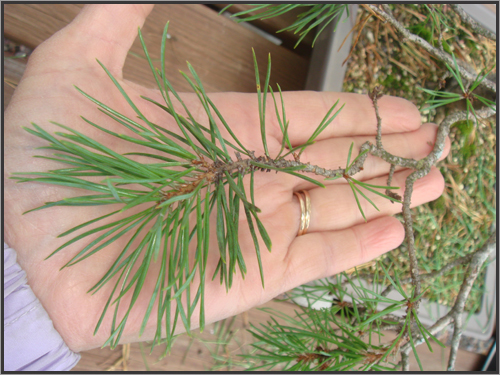
And last, but not least, a picture of an old Scots pine I bought some years ago (needles unplucked, and you can clearly see the colour difference between this year's needles and last year's darker needles). It had been planted in a quite dense soil, but had survived being in a pot for about twenty years. Some of the branches were very long and lanky, lacking side branches. Still, cutting them off is not an option, not yet at least. After three summers in my care I'm happy to see how new buds are forming on very old wood on these branches. A couple of years more, and I think this tree will look very good. It will after a couple of years go into a slightly smaller pot, and needle reduction will be on the agenda from next year.
